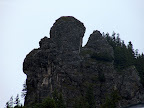 |  | 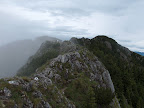 |
 | 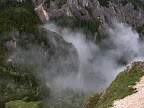 |  |
 | 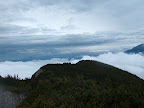 | 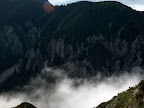 |
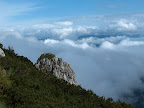 | 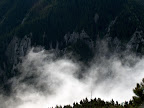 |  |
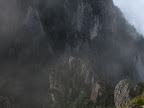 |  | |
 | ||
Jumat, 10 April 2009
Piatra Craiului
Label: My story
Diposting oleh metallic sucker and moslem militan di 10.08 0 komentar
* Home Page * Contact Info * Index * Links Showing posts with label travel. Show all posts Showing posts with label travel. Show all
Thanks to my younger sister I finally found a proper soundtrack for the images I filmed last year in September. Hope you enjoy the Padis experience:
The Padis area (Zona Padis) is located in Bihor's Mountains (Muntii Bihorului) and those, in turn, are part of the Romanian Apuseni Mountains (Muntii Apuseni). Here are some of the main attractions in this region, ordered as they appear in my video:
Pestera Focul Viu: there's a large opening in the roof of this cavern. In summer, on a sunny day, light shines through the opening and onto the glacier inside, creating an illusion of burning fire.
Pietrele Galbenei: large cliff face overlooking a vast valley.
Lumea Pierduta: "The Lost World" - several avens (vertical caves) are grouped in this area, the most spectacular one being Avenul Gemanata.
Cetatile Radesei & Cheile Somesului Cald: a network of tunnels and vertical shafts (avens) dug through the mountain by water.
Cetatile Ponorului: a formation similar to "Cetatile Radesei", but on a much larger scale. The portal seen in the video is its main entrance and it's 73m tall - about as high as a 20 story building.
Pestera Ghetarului de la Scarisoara: the cave which houses the largest glacier in Romania.
Label: My story
Diposting oleh metallic sucker and moslem militan di 10.06 0 komentar
Ciucas > Muntele Rosu > Japp
Dupa o noua iesire in Ciucas si o alta sedere la Cabana Muntele Rosu, a iesit genericul de mai jos. Sper sa nu se supere nimeni...
Cateva precizari care merita retinute:
- daca plecati spre fosta Cabana Ciucas si nu e poteca prin zapada, va ia aproximativ o ora jumate pana la Fantana lui Ioan;
- meniul de la Muntele Rosu are traduceri in engleza sub fiecare fel, si ies in evidenta urmatorii termeni: suc de fructe - juice of fruits; cafea mica - little coffee (aproape ca ti se face mila de saracuta cafea);
- in camere nu e foarte cald asa ca merita sa luati saci de dormit la voi (pentru orice eventualitate);
- fata care ne-a fost gazda e prietenoasa si foarte de treaba, si la fel e si proprietarul, care s-a oferit sa ne ia cu masina din Cheia (noi am ales totusi sa urcam noaptea prin padure).
Una peste alta, totul e bine cand se termina cu bine. Mergeti la Muntele Rosu daca aveti ocazia si vizitati Muntii Ciucas.
Label: My story
Diposting oleh metallic sucker and moslem militan di 09.51 0 komentar
Sabtu, 04 April 2009
Growing Potatoes Potatoes are a staple in the diet
Potatoes are a staple in the diet of many people all over the world. Potatoes are a nutritious, versatile vegetable, and they’re very easy to grow. But before you run out to the garden with your tiller and hoe, there are a few things you should know about planting potatoes.
Do not plant potatoes too early, while the ground is still frozen. If the ground is too cold and wet, the seed potatoes will delay sprouting until the growing conditions are more favorable. This is usually in early March to late April, depending on the climate. Potatoes do tolerate cool soil and a light frost, but not much growth will take place until the soil warms up a bit.
You won’t find potato seedlings or packets of potato seeds for sale at your local garden center. Instead, potatoes are grown from seed potatoes. A seed potato is nothing more than an ordinary potato, with at least one “eye”. The “eye” is the small white growth on the potato that you usually take off when preparing potatoes to cook.
Way back when, before supermarkets, when gardens supplied most of the food put on the table, the last of the potatoes in the storage bin come spring were used for seed potatoes. Wise gardeners set aside their blemish-free, healthiest potatoes for seed. Seed potatoes can be planted whole, or they may be cut into pieces with at least one eye per piece. Seed potatoes with more eyes will grow to produce a larger quantity of potatoes but the potatoes will generally be smaller. Seed potatoes with fewer eyes will produce fewer potatoes, but those potatoes will tend to be larger.
This allows the cuts to heal over slightly, which helps to prevent soil-borne diseases from infecting your potato crop. Always choose seed potatoes that are free from blemishes.
Plant your whole or cut seed potatoes two to three inches deep in good, rich soil. Rows of potatoes should be about three feet apart and the potatoes within the row should be planted If you choose to cut your seed potatoes into smaller pieces, divide them a day prior to twelve inches apart. If your potato crop has suffered from scab in the past, toss a small handful of dry pine needles in the holes beneath your seed potatoes. Along with moving your potatoes to a different section of the garden each year, this will help prevent further scab infection. Potato scab appears as rough patches on the skin of the potatoes.
Depending on the warmth of the soil, potato plants will begin to emerge from the soil anywhere from one to three weeks after planting. When the plants are about a foot tall, use your hoe to mound six to eight inches of soil continuously along the entire row of plants. This is called hilling. Hilling ensures that the potatoes will grow deeply under the soil, away from sunlight which would cause them to become green. Potatoes that suffer from greening will be bitter and the inedible green parts must be discarded.
Keep the potato plants evenly watered while they are growing. A dry period followed by a rainy spell will cause some potato varieties to develop a hollow core.
Another potential problem with potatoes is the potato beetle. The larvae and adult beetles will feed on the potato foliage, and a heavy infestation can damage the foliage enough to reduce your harvest considerably. Watch for the beetle’s yellow eggs on the undersides of leaves and crush the clusters whenever you see them. Larvae are a deep orange color with a row of black spots on both sides, while the adults are a paler orange with black stripes on the body and black spots on the head. The larvae and adults can be picked off the leaves and crushed if there are only a few. An infestation can also be controlled with Bacillus thuringiensis, or Bt. Bt is an organic control that is very safe to use. Look for Bt that is specifically for potato beetles. It is sold in many garden catalogs and garden centers.
Once your potato plants have bloomed, you can begin to harvest small “new” potatoes. Depending on the variety of potatoes you’re growing, this is about eight weeks after planting. In the fall, after the foliage has begun to dry and die back, the entire crop can be dug. Before storing them in a cool, dry and dark place, make sure the surface of your freshly dug spuds has dried a bit. Spread them out in a dry spot out of direct sun, such as a garage or a day
Label: Opinion
Diposting oleh metallic sucker and moslem militan di 09.40 0 komentar
Friday, February 6, 2009 I am Beginning to Wonder
Ya know I started this blog as kind of a passing fancy because I am a believer in surviving, and I love gardening. Thinking this would be a good blog subject for potential viewers. BUT believe me I feel it is time to get serious about these considerations. I am beginning to believe we are in the midst's of a social melt down. and it will be everyone for themselves, Forget about help from the government, look at New Orleans they are still rebuilding, but if it was a another country they would have been rebuilt with state of the art Construction thanks to your tax dollars. This brings my topic of gardening to survive to a hole new level. I hope this is not a panic attack and I am not trying to scare anyone but we need to be ready. Just getting educated on these subjects is not enough, you need to plant that garden, harvest the crops and store them for the year or next growing season. There are so many subjects about surviving as far as actually surviving as to food, water, shelter, weapons, fire, clothing, so many things to consider so just start thinking about what you would need to do to be ready, just in case.
Label: Opinion
Diposting oleh metallic sucker and moslem militan di 09.39 0 komentar
Some things about Container Gardening
I'm a firm believer in container gardening. This type of gardening has many advantages, first you can control the amount of water the plant needs, and if the environment get bad like a storm you can move the plants to a safe place until the storm or whatever passes by. But the best part is you can be right there to watch them grow and develop. Now you want to make sure that your container is deep enough to contain the roots so you want to have enough room for the plant to grow. A good rule of thumb is the roots will grow down as far as the plant grows above ground. Another thing is Please make sure your containers are clean and free of cleaning products. This will have a profound effect on how your plants do over the season because of the residual effect of cleaners.
Label: Opinion
Diposting oleh metallic sucker and moslem militan di 09.38 0 komentar
What's Survivor
For some reason, survivor has became a bad thing, how is this possible, doesn't everyone want to be a survivor? It appears that we as a nation has this death wish, and don't want to survive.
Well I for one plan on being a survivor and I am happy to tell everyone.
Don't be a shame of wanting to survive. It is built into our genes and only the pervert think that there is something wrong with wanting to survive.
What makes a survivor is having a backup plan for your backup plan and the knowledge and skill and equipment to carry them out.
My ultimate last resort is with a good knife I can take care of most survival situations. Drop me off naked with a good knife in most parts of the world and I can make it or at least make a good try of it. Do I want to increase my odds, you bet. The bug out pack increases the odds considerably. I would say be at least a factor of at least 3 for me, for someone with less knowledge or skills, this would increase them by 10 to 50 times. The reason it increases for me is that I do not have to spend time of energy for find or improvise the things that I now have with me. So I have the time and energy to do other things.
What if I don’t even have a knife? Then one of the first main focuses is to find something that can be made into a knife or at least used to cut. A rock that can be chipped to make a cutting edge, a tin can, or anything that can be made into a cutting or puncturing tool.
The idea here is that the mind is the only survival tool you really have and the make it function as a survival tool you need skills and knowledge and most of all the will and determination to survive.
Keeping a clear and unconfused mind is one of the most important things to maintain. Alcohol and or drugs are anti-survival. Anyone that doesn’t think so are not a survivor.
Label: Opinion
Diposting oleh metallic sucker and moslem militan di 09.35 0 komentar
Disaster Scenarios
This table shows the different local or short term problems and the effects that you might expect to encounter. For some of the natural events, moving to an area that does not have the problem is the best solution. If your survival and the survival of your family are important to you, why would you live in an area that can kill you?
We make many decisions during good times that are not in the least survival oriented. So many are in denial as to what can happen. People in California will tell you that they don’t worry about earth quakes and most don’t even prepare for them. If you would have asked people in New Orleans about living in an area prone to hurricanes and below sea level, they would have told you that “I have lived here my entire life and never had any problems.” People will say I am not going to leave I rode out the last one and didn’t have any problems and too often they die because of their foolishness.”
Over 70% of the world’s population lives within a couple of miles of the ocean and sea shores in spite of hurricanes and tsunamis. Many live within a few miles of active volcanoes. Why, is the beauty of the location or the job so important that you are willing to risk your life? Don’t let your job or the beauties of the land kill you, move! Sure there are risks everywhere, but that doesn’t mean that it is survival oriented to ignore the risks when you can be in a place that is less risky, or that eliminates some of the risks. Living a hundred miles from the beach will eliminate the risks of hurricanes and tsunamis, not living in a forest will eliminate the risk of forest fires, living in the country away from a large city will eliminate many of the risks of Terrorist and not living within a flood plane will eliminate most of the effects of floods. Living above the lake will eliminate the possibility of the dam breaking and flooding you. This should be common sense, but for most people, it is just not even in their thoughts.
Local or
National in effect
Starvation
Shelter
Water
Relocation
Food
Skills required
Preparation Required
Terrorist Attacks
X
X
X
X
Biological agent attack
X
X
X
X
Chemical agent attack
X
X
X
X
X
Nerve Gas Attack
X
X
X
Floods
X
X
X
X
X
Tornado
X
X
X
X
X
Hurricane
X
X
X
X
Tsunami
X
X
X
X
Forest Fires
X
X
X
Riots
X
X
X
X
X
Civil Unrest
X
X
Kidnapping
X
X
Hostage
X
X
Bomb Threat
X
X
Suicide Bomber
X
X
Drought
X
X
X
X
X
Conventional War
X
X
X
X
X
X
Nuclear War
X
X
X
X
X
X
X
Race War
X
X
X
X
X
Label: Opinion
Diposting oleh metallic sucker and moslem militan di 09.33 0 komentar
The Retreat
The Retreat
Where do you have your retreat?
There are many within the survival community that
says that you should find a small town, and purchase a house there. The reasoning
being that in that way you will have support from the town people and that
they will defend their community when the ball drops. This might be a valid plan
with some small communities, but for most it is not so good. Many of the
small communities in a lot of states, that have less than 3000 people do not
even have a grocery store, and many have no gas station. They are no longer
in any form self reliant. Now once you get into the 3000 plus size community,
you now again have the same problem as with the larger cities. You have the
crime and the looters already there, just waiting to do their thing at the first
sign of a disaster. Besides, in any small town you will have 90% of the people
stand by and wring their hands, and only a few that will actually want to
prepare and secure the town. It is not likely that the ones that want to secure can
even begin their preparation until the first group of looters has already
arrived and taken over. What do I mean by taken over? Let’s say we have twenty
well armed men come in. The first thing they would do is round up 40 or 50
women and children and secure them in one of the stores. They would then demand
that all the supplies that they want be brought to them. Now in many of the
small towns, what they want might not even be available, so they would kill some of
the children. And make more demands. It will now be almost impossible to
set up a defense to protect the town. Even if a defense was set up before the
first group of looters arrive, how many of the good town folks do you think
will man the guns once the shooting starts? Remember these are not trained
military, or if they were it was WWII or at best Nam. The young are leaving
the small towns, so mostly the old is still there.
For this and many other reasons I do not consider the small town as a suitable retreat.
Besides, for the first few years, even if living there full time, you are one of the outsiders
and not trusted. (In other words part of the problem)
I instead believe that a small farm a couple of miles out of town is better. I will explain why latter. The small farm will give you a chance to plant your survival garden. You also have the land where you can hunt and fish if you have a pond or better if there is a river or a large creek on the land. You can also plant fruit and nut trees scattered among the other trees. Plant trees for wood also. You want a large part of the land in woods. With a few meadows intermingled with berry patches.
Now as you would not be able to defend your farm against even a few looters,
you need to have some way to hide from them. The only safe place is under ground,
so if you have purchased in hill country, you can dig into the side of a hill and build an underground retreat that way. This is best as that will provide drainage. If you are on level ground, you will have to contend with leakage into your under ground retreat much of the time.
Why create problems if you don’t have to? So what do you look for? Hilly
country, a creek or river, wooded land, at least 10 acres wooded. Another 4 or 5
cultivated or meadow with a house. (You can put a mobile home on the land if
doesn’t have a house. A well, utilities if don’t go off grid and access by road, but
not on a major road. Preferable you will have no neighbors within a quarter
mile. Your underground retreat should have enough room to live comfortable, that
means at least 20 square feet for each member. It won’t be like home but you
don’t feel too cramped with that much space. You also need storage for food, water
and equipment. Do not have all of your supplies in the main retreat. In case that it is discovered, for that same reason, have an exit that is on the other side of the hill. Hide the entrance as best you can and if it is away from the buildings there is less chance of being discovered. Preferably yours
will not be the only wooded area around, so there is not much reason for the
looters to look farther than the farm building for something to take. Most will
not be hunters and the few that are will be looking for something like deer.
If in an area where there are cattle around, they will probably go where the
cattle are and stay out of the woods. Cattle are easier to hunt than deer and
provide more meat. A dome structure is best for your underground shelter. Build out
of ferroconcrete will probably be best as that can be done in place. Using
small rebar ¼ or 3/8 it can be bent in place and the ¼ mesh can
be cut into 2 foot wide strips and tied into the structure, chicken wire added in will
allow you to place concrete into the mesh making the dome between 1 and 2 inches
thick. This is thick enough to support about three feet of earth above and if
curved all the way down, will not be forced in by the surrounding dirt. Start
the dome about three or more feet in from the edge. A twenty foot dome will be
10 feet high in the center and will have about 300 square feet of living space.
If needing more room create a second dome connected by a tunnel, at least
3 feet long. If done in this manner you should be able to hide your retreat
from prying eyes, even during construction.
Label: Opinion
Diposting oleh metallic sucker and moslem militan di 09.26 0 komentar
